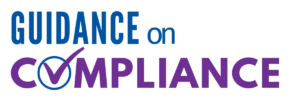Over the last several weeks, increased communication has been released on the municipal allocations allocated under the American Rescue Plan Act (ARPA). These funds can be distributed to not-for-profit aging services providers spanning many approved programs, services, and purchases.
This begs the question—how do not-for-profit aging services providers apply for these ARPA funds?
As highly- regulated organizations, aging services providers are used to completing complicated forms and submitting in-depth proposals and grants. For this reason, the American Rescue Plan (ARP) funding request process, yet again, appears onerous for leaders to wrap their heads around, but is it? The ARP funding request process doesn’t involve any of the traditional models for applying for government dollars! This lack of standardization poses challenges to aging service providers.
The process does not utilize a single form or national “clearinghouse” through which providers apply for funds. Rather, all funding requests are directed through the most granular levels of local municipal government, which is not standardized from state to state. The manner in which a provider in Texas applies for funds will be different than a similar organization in Maryland. To further complicate matters, each State allocates the funding amounts based upon their governmental sovereignty, varying from municipality to municipality, leading to confusion as to what kind of funding is available.
At LW Consulting, Inc. (LWCI), we liken the ARP funding request process to applying for college scholarships when you are a senior in high school. Many people want to see you succeed, but it’s up to you to ask for the money and the process is not standardized. Applicants must research the available opportunities and contact those organizations directly for an application, which could vary greatly in complexity; and for most municipalities, they have not established their process. Similar to scholarships, applying for ARP municipal funding can be a daunting and time-consuming task.
The lack of a standard process and form, leaving formatting up to the applicant, which can become complicated quickly when trying to create the business case to comply with the eligible provisions of the ARP funds. The regulations, as outlined in the Act itself and the subsequent guidelines, are broad enough to allow for some interpretation on what qualifies but the qualifying requirements are stricter. Ensuring that an application meets the requirements, tells a compelling story, and demonstrates need as it relates to economic relief and recovery as a direct result of COVID-19 is the trifecta of an eligible request.
This is how LWCI has been able to assist clients thus far. We combine our deep knowledge of the legislation with our ability to demonstrate clinical need through a compelling narrative. In this way, we have been able to catch the attention of municipal officials, showing that not only are such requests within the guidelines, but that they are critical for the long vitality of senior living residents, team members, and have a positive impact on the municipality’s residents and emergency preparedness.
The American Rescue Plan Act is truly a once-in-a-lifetime opportunity for aging services organizations to access tranches of funds never seen before the COVID-19 Pandemic. LWCI encourages not-for-profit providers to take a look at this legislation and make an attempt to request funding before it’s too late.

